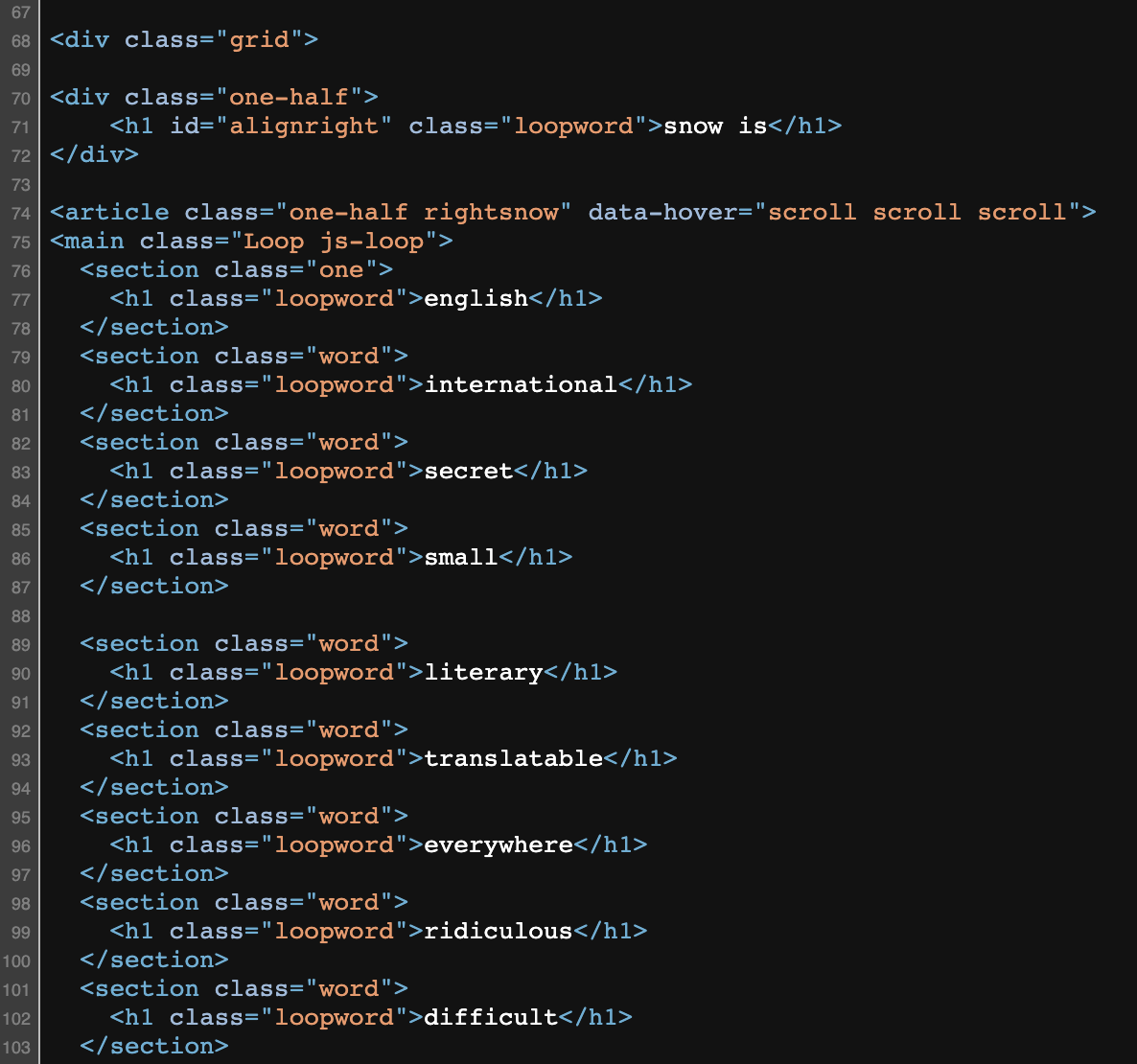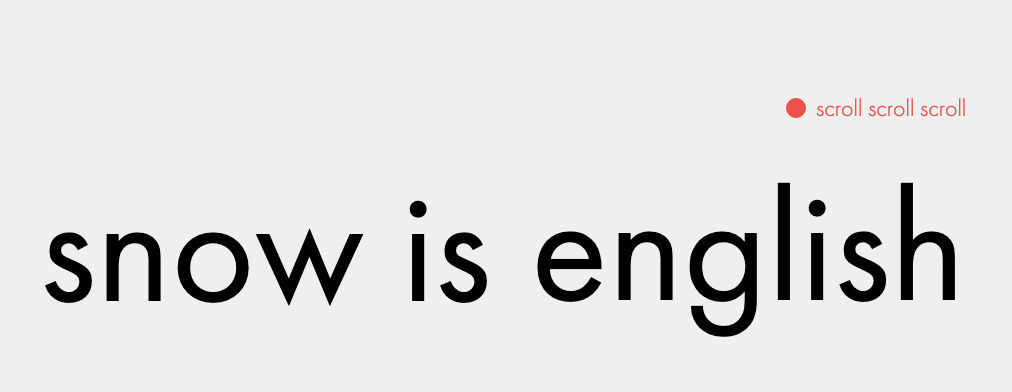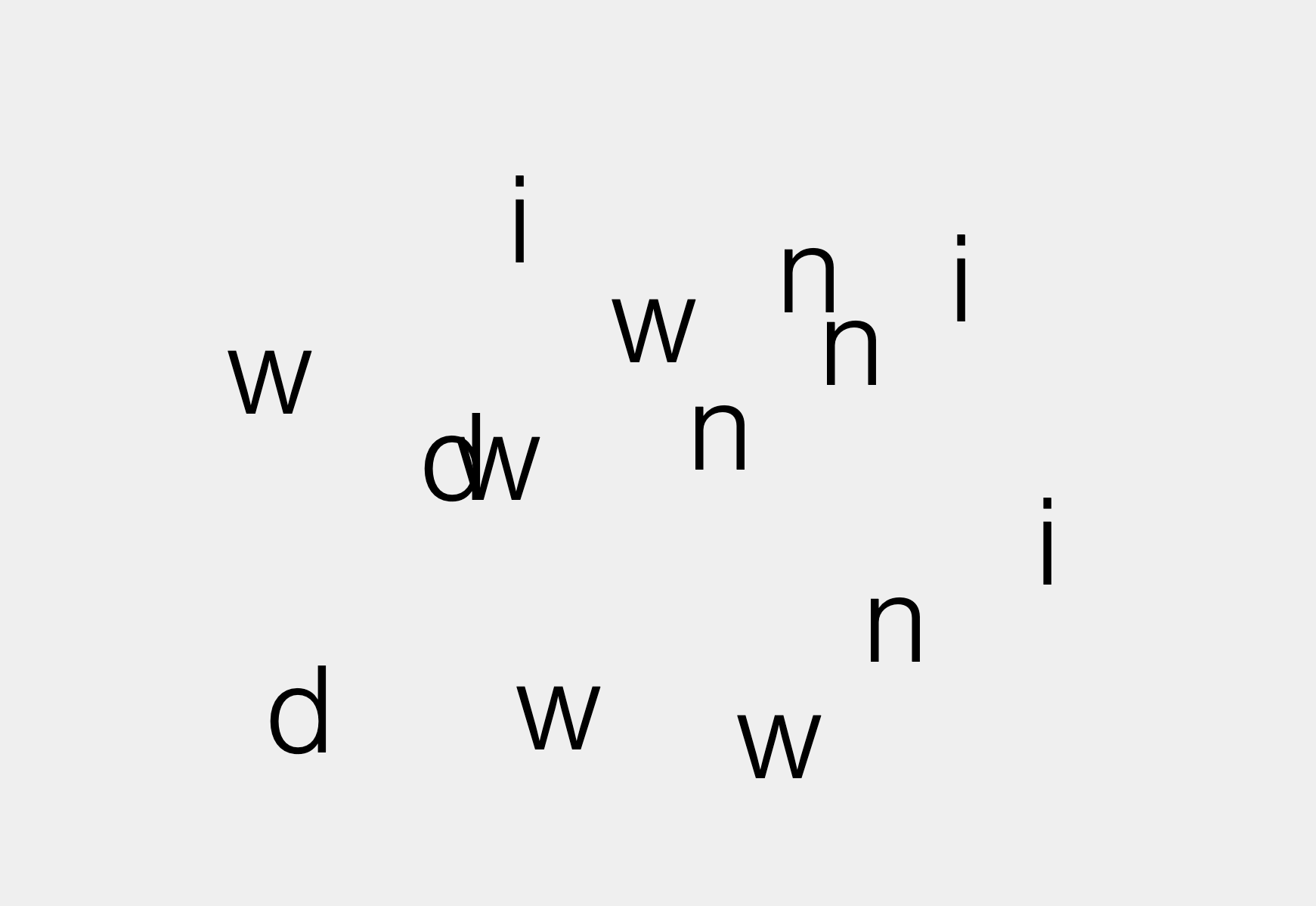“The constellation is a system, it is also a playground with definite boundaries. The poet sets it all up. He designs the play-ground as a field-of-force & suggests the possible workings. The reader, the new reader, accepts it in the spirit of play, then plays with it. With each constellation something new comes into the world. Each constellation is a reality in itself & not a poem about some other thing.”
–Gomringer, 1968
digital concrete is a digital and interactive interpretation of seven concrete poems published in The Book of Hours and Constellations: Being Poems of Eugen Gomringer, Presented by Jerome Rothenberg (Something Else Press, 1968). The project takes inspiration from the quote above in its playful and experimental design that is a starting point to explore the relationship between language and form that occurs in a digital interface. In a conceptual framework, the project also posits how a digital experience has the potential to reimagine performance, authorization and paratextual elements as “threshold”, “an undecided zone”, “the fringe” (Genette, 1991, p.261).
Concrete poetry is a literary movement from the 1950’s which uses arrangements of letters and linguistic elements to enhance the meaning of a poem. Since it relies heavily on design and typography, it can also be considered an art movement born from the anti-impressionistic, non-representational concrete art of the 1930’s which attempted to create universal art through simplistic design. The attempt to create visuals from language has a far longer history going as far back as pictographic writing systems to 19th century French Symbolism as demonstrated by Stéphane Mallarmé to 20th century avant-garde experimental writing and poetry by Dada and Futurist artists such as Tristan Tzara and F.T. Marinetti.
Eugen Gomringer (1925 –) is a concrete poet and writer who actively collaborated with artists and designers such as Max Bill and Karl Gertsner in post-war Switzerland. His early poems of the 1950’s were strongly informed by the minimalist aesthetics of concrete art. The Book of Hours and Constellations contained new works, as well as re-published, English translations of his previous work by Jerome Rothenberg.
The digital concrete website begins with a front page which sets the stage for an interactive experience. In a nod to the codex, a digital, 3-dimensional version of the 1968 book appears in an infinite space where the reader can twist, turn, rotate, and otherwise amuse oneself by simply moving the cursor. This simple act gives agency to the reader and suggests she has control. A navigation system is also shown, one of the key components in any website. In examining how Genette’s concept of paratext can be applied in digital spaces such as DVD’s and e-readers, Birke and Christ write that “paratextual elements also have a navigational function in that they guide the reader’s reception in a more mechanical sense, both when approaching the text and when orienting herself within the text” (2013, p. 68). This website’s navigation system allows for easy access to all poems in one-click. In subsequent pages, the navigation is hidden (but can be revealed) so as not to obstruct the poem itself, mimicking the design of the publication’s page which featured vast areas of empty spaces and small typography.
Other details of this project demonstrate additional ways in which paratextual elements can expand Genette’s concepts into a digital realm. The code itself is the method through which the text exists on the screen; the code allows the text to present itself, to be received by the reader (Genette, 1991, p. 261). If one were to see the code, they would recognize the poems in a different form, perhaps surrounded by unfamiliar characters and numbers. As an alternative to this project, the code (without the front-end design and interactivity) could be presented as the project itself, offering yet another interpretation of the text. One aspect that code offers which differs from a printed book is its ability to generate randomness. In 07 mist, the code randomly chooses between the words “mist”, “meets” and “missed”. When the user clicks on a set of words, the order of the words also changes randomly. This introduces the notion of chance in making and reading the poems. As used by Dada artists, this gesture disrupts the artist’s control in making decisions. Similarly, when used with digital poetry in this project, although the reader has control when clicking, they have no control in the outcome, which leads to unique poems and multiple interpretations.

example of poem in code
Aside from code, there are other elements which the digital interface must include that are not considered in printed books. Each poem page has a small set of instructions that follow the cursor (“click”, “hover”, “drag”), informing the reader what to do. In most cases, books do not need instructions. Instead, because they follow certain graphical codes and visual cues, they can be read intuitively. As Drucker points out in “Diagrammatic Writing”, “In a dynamic frame space, digitally networked, the primary moves [placement and relation] are each complemented by secondary moves: Opening, Linking, Dropping down, Dripping, Sliding…” (2013, p. 29). However, in a digital environment, displaying instructions, underlining a link, highlighting certain text, may be necessary in order to achieve the secondary moves.

example of instructions
In other poem pages, the reader actually becomes an author by creating the poem itself (04 wind and 05 hang are blank until the reader clicks the mouse), situating the project as an attempt at deformance. In their essay “Deformance and Interpretation”, Samuels and McGann describe deformance as a creative act that does not necessarily aim to set a meaning but instead reimagines it as a performance (Samuels, McGann, 1999, p. 26). Although the project does not deliberately misread or intentionally “break” the original text, it forces the reader to perform and make/remake the poem, with a unique outcome each time. In fact, a conscious decision was made to refer back to the original text by providing a way to see the poem from the pdf version of the book (clicking on the rectangle in the upper left corner of the screen will display an image of the pdf page). This dialogue between the digital and printed page allows the reader the opportunity to compare and analyze “their poem” with that of Gomringer’s.

example of reader as author
Although only seven poems are presented here, digital concrete offers up the possibilities for more digital experiments involving the nature of reading, playing, interpreting and performing texts while maintaining a connection with the printed codex. Gomringer himself defines “the new poem as a functional object… The purpose of reduced language is not the reduction of language itself but the achievement of greater flexibility and freedom of communication” (Solt, 1968, p. 69). In this website, I’ve attempted to create an experience where the poems are used, created, activated, and presented with purpose.
Sources
Birke, D., & Christ, B. (2013). Paratext and Digitized Narrative: Mapping the Field. Narrative 21(1), 65-87. doi:10.1353/nar.2013.0003.
Drucker, J. (2013). Diagrammatic Writing. new formations: a journal of culture/theory/politics 78, 83-101. https://www.muse.jhu.edu/article/522095.
Drucker, J. (2011). Humanities Approaches to Interface Theory. Culture Machine, 12.
Genette, G., & Maclean, M. (1991). Introduction to the Paratext. New Literary History, 22(2), 261–272. https://doi.org/10.2307/469037
Gomringer, E., et al. (2021). Words Form Language: On Concrete Poetry, Typography, and the Work of Eugen Gomringer. Triest Verlag für Architektur, Design Und Typografie.
Rothenburg, Jerome. (1968). The Book of Hours and Constellations: Poems of Eugen Gomringer. Something Else Press, Inc.
Samuels, L., & McGann, J.J. (1999). Deformance and Interpretation. New Literary History, 30(1), 25-56. doi:10.1353/nlh.1999.0010.
Solt M. E., Barnstone W., Campos A. de & Guimarães Marco Pólo. (1968). Concrete poetry: a world view. Indiana University Press.